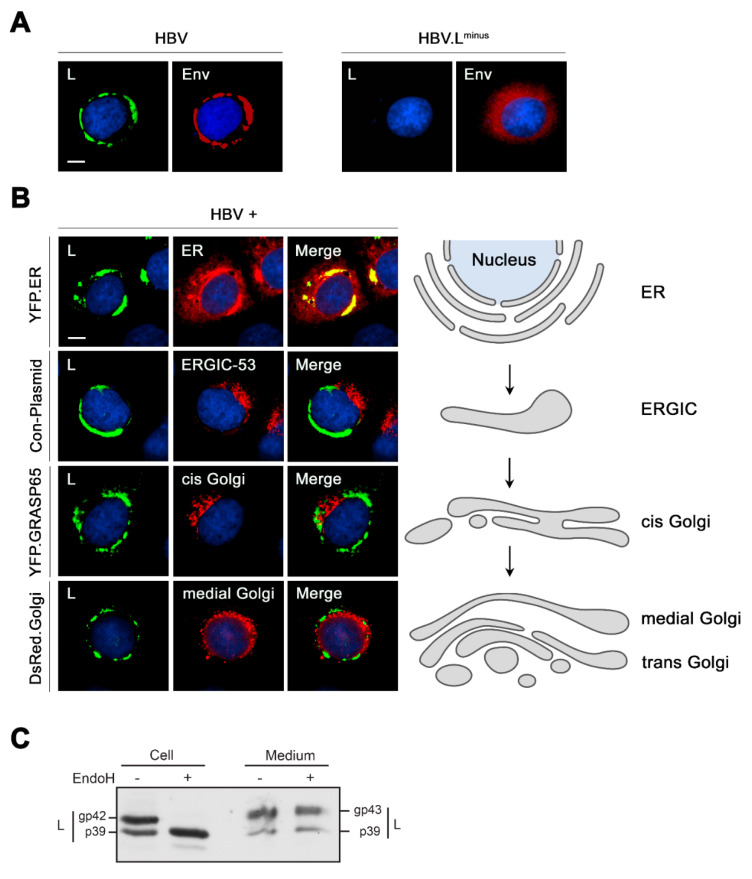Figure 1.
Trafficking analysis of hepatitis B virus (HBV) L through the cell secretory system. (A) HuH-7 cells were transfected with the wild-type (wt) HBV replicon construct (HBV) or the mutant replicon HBV.Lminus defective in L protein synthesis. Three days post-transfection, cells were fixed with paraformaldehyde (PFA), permeabilized and reacted with L-specific antibodies (57761, L, green) and an S domain-specific antibody, recognizing all three L, M and S proteins (K38, Env, red). Bar, 10 µM. (B) HuH-7 cells were cotransfected with the plasmid pHBV* replicon together with control DNA or plasmids encoding YFP.ER, green fluorescent protein (GFP).GRASP65 or DsRed.Golgi, as indicated. PFA-fixed cells were reacted with antibodies against the preS1 domain of L (K1350, green). To visualize endoplasmic reticulum-Golgi intermediate compartment (ERGIC) structures, cells were co-stained with an ERGIC-53-specific antibody (red). The autofluorescence pattern of YFP.ER, GFP.GRASP65 and DsRed.Golgi are shown in (pseudo-colored) red, and DNA staining is depicted in blue. Overlaid staining patterns are displayed in the Merge panels. Bar, 10 µM. The cartoon on the right depicts the anterograde organization of the cell secretory pathway. (C) Lysates (Cell) and concentrated supernatants (Medium) of HBV-replicating HuH-7 cells were mock-treated (−) or treated (+) with Endoglycosidase H (EndoH) to inspect the N-glycan pattern of L. Samples were examined by Western blotting (WB) using L-specific (K1350) antibodies. The nonglycosylated (p39) and glycosylated (gp42/gp43) forms of L are indicated.

